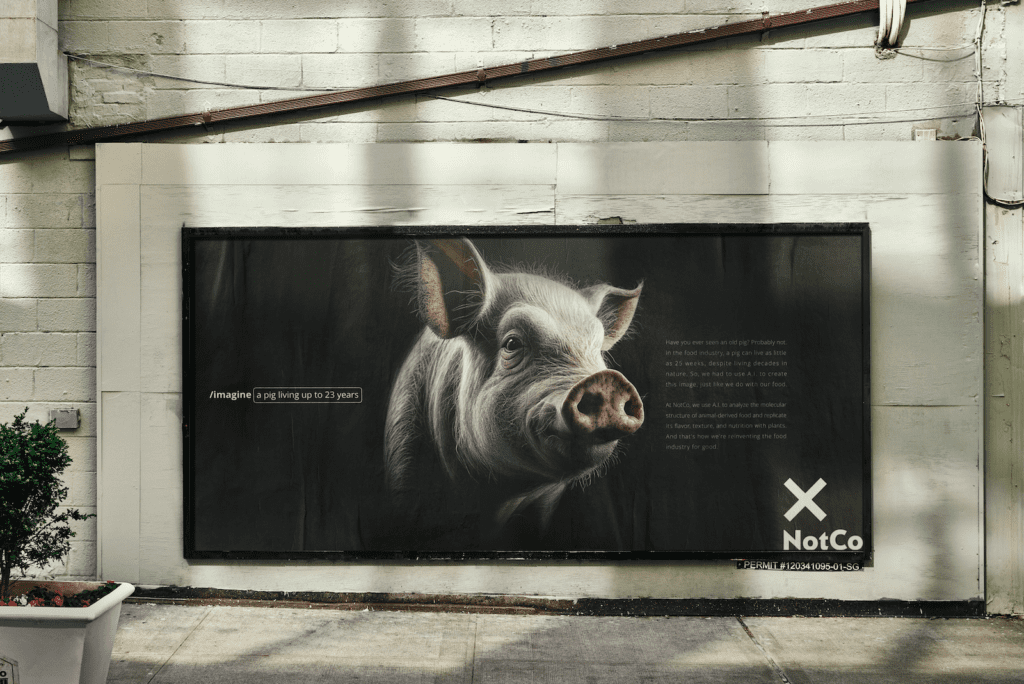In today’s world, where environmental and social challenges continue to escalate, sustainable advertising has emerged as a powerful tool for promoting positive change.
By integrating eco-conscious practices and messaging into advertising campaigns, brands can significantly impact both consumers and the planet.
We will explore the latest trends and innovations in sustainable advertising, focusing on some interactive digital campaigns, virtual reality experiences, and more below. So, let’s dive in!
Interactive Digital Campaigns
Interactivity has become the heart and soul of engaging audiences with sustainability messages. By creating immersive experiences that allow users to participate actively, brands can foster a deeper connection and drive behavior change.
Interactive digital campaigns have proven to be highly effective in capturing attention and inspiring those to take action. “Interactive content is more popular than traditional passive content. It’s been shown to increase the retention of messages by 79%.”(Shopify, 2023). (Shopify, 2023).
Additionally, studies show “that interactive banner ads led to the highest percentage of participants exhibiting brand recognition (60.4%), followed by static in-game ads (22.4%), noninteractive banner ads (21.3%), and finally advergames (14.3%) [43].
They also found that interactive banner ads led to the highest memory of product characteristics (8.22 out of a 12-point scale), while noninteractive banner ads led to the lowest memory (3.87).”(National Library of Medicine, 2022). (National Library of Medicine, 2022).
By harnessing the power of interactivity for sustainable advertising, it can create lasting impressions and influence positive behaviors for people to want to be eco-friendly in their consumption.
For example, Levi’s is a clothing brand that wants to promote sustainability through its “Buy Better, Wear Longer” campaign. Levi’s campaign first circulated around the internet around 2021 and has since been relaunched at the end of 2022 to build on its long-term commitment to prolong the lifespan of its products using recycled materials. They use video ads and interactive campaigns that show a pair of jean’s lifecycle, how they are produced, used, and how long they last across multiple platforms.
This approach enabled consumers to truly understand the environmental impact of their purchasing decisions and make more informed choices.
Virtual Reality Experiences in Sustainable Advertising
Virtual reality (VR) has revolutionized storytelling and offers immense potential for sustainable advertising. By immersing users in realistic and impactful scenarios, VR experiences can effectively convey environmental and social messages.
“VR is set to become one of the fastest-growing entertainment and media segments in 2020 to 2025. In 2020 alone, it raked in a revenue of $1.8 billion.” (Global Entertainment & Media Outlook, 2023).
A VR project that stood out to us by Participant Media and Condition One called “This is Climate Change.” Their goal was to help people view the adverse effects of climate change and bring awareness toward a more sustainable life. These users were “transported” to different corners of the earth to show that rising temperatures have significant ecological impacts. Some people may have experienced wildfires, famine, deforestation, and droughts, exposing them to the direct environmental effects of emissions.
The benefits of VR in sustainable advertising are undeniable, showing that it can increase empathy and emotional connection with the message, resulting in a higher likelihood of behavior change. However, implementing VR campaigns can come with challenges like cost and accessibility. Forward-thinking brands have leveraged VR to create transformative sustainability narratives despite these obstacles.
Leveraging AI and Machine Learning in Sustainability
AI and machine learning technologies are changing how we approach advertising. AI-powered campaigns can deliver targeted messaging that resonates with individual consumers by analyzing vast amounts of data and providing personalized content.
However, when it comes to AI and sustainability, it can also optimize resource allocation, reducing waste and improving overall efficiency. To implement AI sustainably, brands should ensure ethical data usage and transparent algorithms and avoid reinforcing biases.
An example of a company using AI for creativity is NotCo. NotCo is a B Corp and vegan food company that used AI technology in an ad to share pictures of different farm animals like cows, pigs, and chickens at their natural life expectancy without the food industry getting in the way of it. NotCo hopes to raise awareness for the company and a vegan diet by showing how the animals would look if they were allowed to age fully.
The impact of AI in sustainability messaging is tangible. Studies reveal that personalized ads based on AI algorithms have a higher conversion rate than generic ads.


Gamification in Sustainable Advertising
Gamification has emerged as a powerful technique to encourage sustainable behaviors through engaging and enjoyable experiences. By transforming sustainability practices into interactive games or challenges, brands can make eco-friendly actions exciting and rewarding for consumers.
One brand that used gamification to its advantage was, Ecologi, a company that galvanizes like-minded individuals and other companies looking to make their place of business to become climate positive. One of their clients, UsTwo, served as a way to tie sustainability with gaming. Their game, “Alba: A Wildlife Adventure,” follows a young girl visiting her grandparents on an island on vacation and is needed to save animals. The game inspires action by integrating environmental conservation and sustainability with action.
For every copy of the game that was downloaded or sold, UsTwo plants one tree with Ecologi and reached 1 million trees in 2021.
The impact of gamification on sustainable advertising is striking. Additionally, gamification fosters a sense of achievement and competition, motivating users to continue their sustainable habits beyond the campaign duration. By incorporating game-like elements into advertising initiatives, brands can create memorable experiences that drive positive change.
Augmented Reality Opportunites
Augmented Reality (AR) offers an exciting opportunity to raise awareness about sustainability issues and tangibly showcase eco-friendly practices. AR campaigns can provide interactive and educational experiences by overlaying digital content in the real world.
Warby Parker’s Virtual Try On feature is another example of successfully merging convenience with eco-consciousness in the realm of eyewear shopping. Their Virtual Try On feature allows customers to use smartphones or other compatible devices that use precise facial mapping in real-time to try on any frames they wish before buying them. This experience eliminates the need for physical samples or trying on multiple frames in-store, reducing the associated waste and carbon footprint from different models alone.
Implementing AR in sustainable advertising requires careful consideration. Factors such as device compatibility, user experience, and integration with real-world objects must be considered. Nevertheless, AR campaigns have the potential to create memorable and impactful moments that inspire individuals to adopt sustainable behaviors.
Staying Ahead of the Curve: Strategies for Effective Sustainability Messaging
To ensure the effectiveness of sustainability messaging, your brand must stay ahead of the curve by embracing new technologies and adopting integrated approaches. Understanding your target audience and their sustainability concerns is essential. Conducting research and leveraging data can help you tailor your messaging to resonate with specific demographics and interests.
Collaborating with sustainability experts and influencers can amplify the impact of advertising initiatives. By partnering with individuals who are passionate about environmental and social causes, your company can tap into its established networks and engage broader audiences. Furthermore, you can create truly immersive and impactful sustainability campaigns by embracing an integrated approach that leverages multiple technologies, such as combining VR experiences with AI-powered personalization.
Conclusion
Sustainable advertising is evolving rapidly, so leveraging innovative technologies to drive positive change is on the up and up. From interactive digital campaigns to virtual reality experiences, AI and machine learning applications, gamification, and augmented reality, brands are harnessing the power of these tools to engage audiences and promote sustainability.
By embracing these trends and innovations, businesses can enhance their brand image and contribute to a better, more sustainable future. Together, we can seize the opportunities that lie ahead and create a world where advertising catalyzes positive environmental and social impact.



